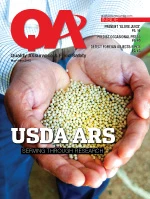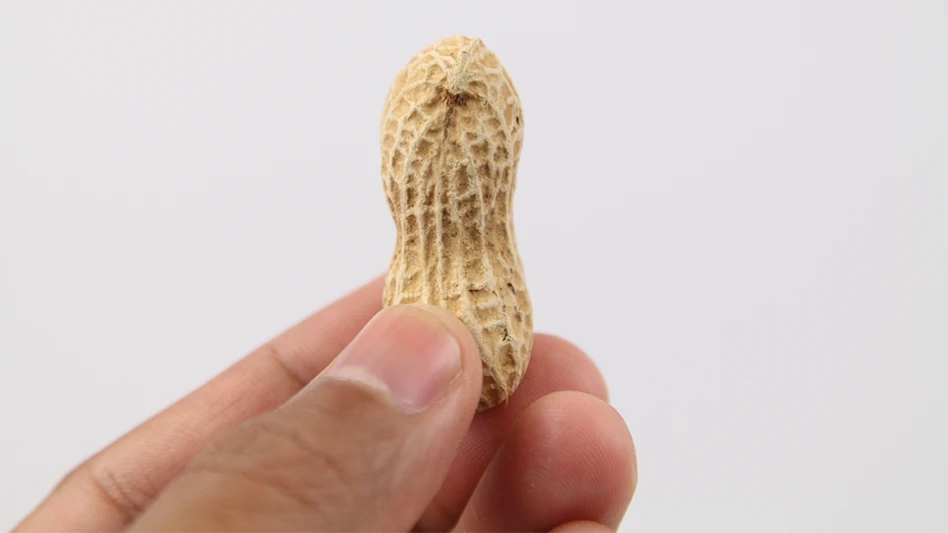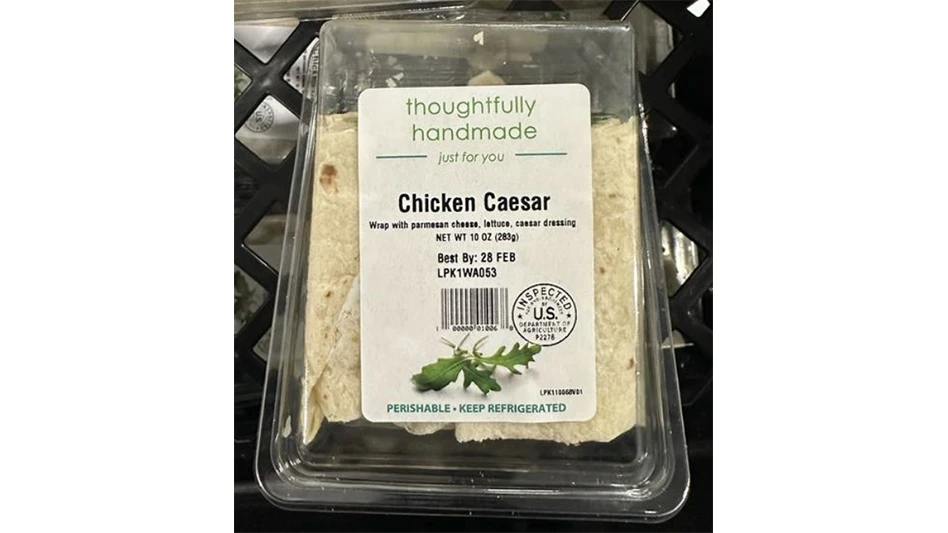 At BARC (from left), USDA ARS Lead Scientist Jitu Patel, Research Leader Dan Shelton, and Microbiologist David Ingram in front of Building 167, the “Dairy Barn.” Built in 1913, the barn was the first building at the 7,000-acre ARS center in Beltsville, Md., and is the site of the agency’s initial research. At BARC (from left), USDA ARS Lead Scientist Jitu Patel, Research Leader Dan Shelton, and Microbiologist David Ingram in front of Building 167, the “Dairy Barn.” Built in 1913, the barn was the first building at the 7,000-acre ARS center in Beltsville, Md., and is the site of the agency’s initial research. |
When one thinks of the federal agencies that regulate the food and beverage industry, it is usually exactly that which first comes to mind: regulation. However, as exemplified by USDA’s Agricultural Research Service (ARS), there is a great deal more to these agencies than making and enforcing regulations.
With more than 2,200 scientists and postdoctorates working on more than 800 research projects, ARS is continually striving to fulfill the onus of its name: serving the American public through research. As National Program Leader for Food Safety Mary Torrence explained, “If we develop something, that’s great. But the ultimate goal is technology transfer so it can be used and have an impact. We can develop methods and techniques, but unless we can transfer our research, our accomplishments are limited.
“Our goal is to find ways to assess, control, or eliminate foodborne contaminants at whatever level, so we can produce safe food for the consumer,” Torrence added, noting that this doesn’t just mean a focus on bacterial pathogens, but also on chemicals, pesticides, toxins, and mycotoxins. Food safety is always a high priority, she said, but the focus may shift as issues and needs emerge and change. For example, ARS was working on projects in field contamination prior to the 2006 spinach E. coli outbreak. But when that hit, the priority of these projects was heightened.
Prior to joining ARS, Torrence was with USDA’s Cooperative State Research, Education, and Extension Service. “I think both agencies try to look at what is most important, prioritize food safety, and build on our strengths.”
One of the greatest strengths of ARS, she said, is its ability to be flexible. With its infrastructure of scientists and equipment, it can respond quickly to emerging issues to develop technologies and methods across a wide array of platforms. In addition, Torrence said, ARS is very good at collaborating on and developing methods and technologies, then transferring these to industry or regulatory laboratories.
ARS has research units located in nearly every state across the nation, each of which has a focused mission and research program. Our visit was to Beltsville, Md., which houses the Beltsville Agricultural Research Center (BARC) and the Office of National Programs (ONP). ONP includes more than 20 national program leaders with expertise in many scientific disciplines. ARS has 18 National Programs that fall under four main areas—Nutrition, Food Safety and Quality; Animal Production and Protection; Natural Resources and Sustainable Agricultural Systems; and Crop Production and Protection. (Read more about ARS at www.qualityassurancemag.com, Online Extras.)
ARS has the additional expertise of scientists in its ranks who have crossed over from industry, such as Food Technologist Yaguang Luo (Sunny), who previously worked at Dole, and Lead Scientist Jitu Patel, with experience at Tetley. “They understand what motivates industry, what the concerns are in the industry; and they have contacts,” said ARS Environmental Microbial and Food Safety Laboratory Research Leader Dan Shelton.
This is particularly important when limited government resources are considered. With only about 10 percent of the ARS research budget allocated to food safety (see chart, below), Shelton said, “We can’t cover everything; we have to be selective with our limited resources.” For this reason, the group focuses its efforts where it sees the research as capable of having the greatest impact as well as where highest risk is identified.

Even with such discretion, however, the Beltsville location alone has more than 250 researchers heading up or collaborating on more than 100 projects on its 7,000 acres of land; so we narrowed our visit to focus on select food safety and quality projects that impact successive steps of the food chain.
Through a myriad of programs and projects underway at ARS, “We have captured almost the whole spectrum from the source to the food-display case,” Shelton said. This is critical because, he said, “The more you know about the sources and pathways, about how it gets to the point where contamination can occur, the better you can identify and mitigate it.”
And that’s not easy, Torrence said. “It’s a very difficult process because the food production chain is not really linear. It’s a very interconnected, complicated system.” However, the ultimate goal is to take an organized approach to follow it all the way through.
Farm to Fork. Farm to fork has become a fairly standard term to describe the many links of the food supply chain from origin to consumer. But ARS takes the chain back one step further, beginning its food quality and safety research before the first seed is sown or cattle are raised. Examples of projects along the food continuum include:
Pre-Field Seeding. As detailed in the technical abstract for a lysimeter irrigation project: “Irrigation can be a source of contamination in outbreaks associated with produce. A cost-effective method for small growers to reduce the risk of foodborne bacterial contamination on produce is a critical need.” The purpose of the research is to use the lysimeter, a device which measures the movement of water and/or substances in soils, to study the extent to which runoff from animal manure may contaminate surface water and to determine the best ways to prevent the bacteria from reaching lakes, rivers, and streams—and crops and taps. It is an issue related to both field irrigation and drinking water.
Plots of land of varying slopes, soils, and/or grass buffer strips are sectioned off and fitted with underground linings. Manure is applied to the surface and the plots irrigated with a rainfall simulator. The water is collected in gutters that surround the plots, then analyzed.
Such studies can help simulate potential contamination from wildlife living near crop fields as well as stream water contamination from wildlife or cattle that drink and defecate in a stream, which is then used as irrigation water at a downstream farm.
 Agricultural Engineer Diane Chan explains the use of spectral imaging for quality and safety inspections of produce, poultry, grains, and environmental sanitation. Agricultural Engineer Diane Chan explains the use of spectral imaging for quality and safety inspections of produce, poultry, grains, and environmental sanitation. |
Studies have been conducted at the site for a number of years, with annual variations to answer different questions, such as: How much contamination runs off? How much seeps into groundwater? How well and how long can organisms survive in the water? What is the impact of aging manure? Can pathogens become incorporated into biofilms in an irrigation system? What is the likelihood of field contamination from any of the above? And, most importantly, how can it be prevented?
In addition to developing recommendations for stopping contamination, the research can help producers determine where contamination may originate.
Field Growth. Having a Biosafety Level 2 (BL2) facility, BARC scientists have the ability to work with biohazardous materials, such as pathogenic agents. As such, Patel has been working with root uptake/internalization of E. coli O157:H7 in organic produce. One project conducted in the growth chamber involves the inoculation of baby spinach grown in a hydroponic medium. Samples of the roots, stems, and leaves of the spinach are then evaluated for internalized E. coli. Also, the study examines the variation in uptake if the root system is slightly damaged. Patel has preliminary data suggesting that this damage can cause rapid penetration of the bacteria throughout the plant.
In another growth chamber study, Patel has been examining the role of green manure in controlling pathogens in the soil. Thus far, results show that soil inoculation of a plant cultivar with an antimicrobial compound (glucosinolate) is killing E. coli. Thus, Patel is continuing this work to determine just how effective it can be in field trials.
Processing Mini Pilot Plant. The BARC site includes a mini pilot plant where it can simulate produce cutting, washing, drying, and packaging processes. Numerous studies are conducted in this area, though the current emphasis is on leafy greens and tomatoes, said Ellen Turner, support scientist for Food Technologist Luo.
 Dr. Robert Saftner and Food Technologist Eunhee Park pass samples to test participants at the ARS sensory center. Dr. Robert Saftner and Food Technologist Eunhee Park pass samples to test participants at the ARS sensory center. |
One study, in conjunction with a major produce company, assessed the efficacy of the “T-128” wash aid on cantaloupe and equipment. Originally meant to assess its ability to stabilize chlorine in the wash water, the study found that it actually enhanced the effectiveness of the chlorine.
Chlorine is very good at killing microbes in the water, but not as good at removing microbes or biofilms that become attached to the produce or equipment surfaces. However, results of the study indicated that T-128 can aid in reducing pathogen viability in biofilms on stainless steel and cantaloupe rinds, and thus can aid in sanitizing equipment or produce during fresh-fruit processing.
Another produce study focused on in-field coring of lettuce during harvesting. This project identified various environmental factors and harvesting practices that may facilitate pathogen transfer from soil to lettuce during harvesting, and led to development of coring knives with improved food safety features. The results have been used by the produce industry to perform food safety risk assessment and identify opportunities to reduce pathogen contamination.
In-Process Inspection. An ongoing project at ARS involves the use of spectral imaging for quality and safety inspections of produce, poultry, grains, and environmental sanitation. Research begun 15 years ago has produced an automated spectral line-scan imaging system for poultry processing that is now approaching commercial use, said Agricultural Engineer Diane Chan, but the researchers are continually improving the systems to increase speed, sensitivity, and view. For example, current produce projects are focused on enabling the viewing of the whole surface through rotation of products such as apples, and conveyor flipping of produce such as leafy greens, while the system produces a constant stream of images to detect irregularities. “At every pixel, you can get spectral data,” Chan said. “It eliminates the need for timing and focus on each item.”
For environmental sanitation, the group is developing portable imaging systems that can detect biofilms or other irregularities in processing facilities; in effect, Shelton said, the systems act as an “electronic white glove, allowing [managers] to figure out where they should spend their efforts and allot their time more effectively.”
With the systems explained and demonstrated by Biophysicist Moon Kim and Biomedical Engineer Alan Lefcourt, the group has developed a backpack system, and is working on a more compact, user-friendly version. The over-arching goal is to create a feasible, practical, and flexible hand-held system that will detect sanitation issues. “For sanitation, there are no false positives,” Lefcourt said. “If something is there, it’s probably not supposed to be there.”
 Engineer Alan Lefcourt demonstrates a backpack imaging system, for which a more compact, user-friendly version is in development. Engineer Alan Lefcourt demonstrates a backpack imaging system, for which a more compact, user-friendly version is in development. |
Although there are multi-camera defect and sorting systems in use in the industry, the scientists are seeking to develop multi-tasking cameras, so more can be done with less at less expense.
Sensory Testing. In addition to ensuring the safety of foods, ARS also focuses efforts on quality control and product development. Thus, to aid scientists as they conduct their research, the ARS sensory centers help to “establish the value of a variety or even its very acceptability” and “save time and money for evaluation of products.”
With 10 computer-integrated stations, the center conducts sensory testing panels for industry and its own scientists, basing each panel on whatever it is the scientist is trying to determine. While QA magazine was there, the focus was on Asian pears. Consumers are beginning to request the flavorful pears, so along with research determining which varieties may grow best in the U.S., ARS conducts panels to determine which will be most accepted and desired by consumers. Panels are generally composed of untrained consumer participants, testing up to five samples at a time. To get the best results, a full test will usually consist of six to 12 panel sessions with the sampling order changed in each to ensure against preferential placement of any sample. The center can also adapt conditions, such as lighting, to prevent or test bias. For example, in one study conducted under regular lighting a strain of orange tomatoes received low ratings; but when lighting made color undetectable, panelists rated the same tomato much higher in taste.
Maintaining Temperature. ARS research doesn’t stop at the processing of foods, rather its projects continue through retail to improve food safety right to the consumer. One project conducted by a multi-disciplinary research team including Luo and microbiologists Xiangwu Nou, Patricia Millner, and David Ingram, focuses on temperature control of retail produce cases. Using bagged, shredded sponge material to simulate leafy greens, the goal of the project is to determine how to best maintain the FDA Food Code-required temperatures of below 41°F for fresh-cut produce. Then, using actual produce, Ingram studies the fate of foodborne pathogens on produce under simulated retail conditions.
One issue, Ingram said, is that, just like home refrigerators, retail cases go through defrost cycles, during which temperatures rise significantly. Ingram is studying how this temperature cycling impacts the growth and survival of foodborne pathogens on the produce.
Industry Collaboration. With equipment donated by Hussmann, funding through a grant of $1.6 million from the National Institute of Food and Agriculture, and a focus on produce safety, the retail temperature-control project is a good example of the collaboration both within and outside ARS.
 Food Technologist Eunhee Park conducts produce tests in the ARS mini-pilot-plant area. Food Technologist Eunhee Park conducts produce tests in the ARS mini-pilot-plant area. |
One key to ensuring prioritization of meaningful research and results is ARS partnerships and interaction with stakeholders, such as regulatory agencies and industry. ARS does quite a bit of work with and for other USDA agencies, such as the Food Safety and Inspection Service and the Agricultural Marketing Service as well as with the FDA and the Department of Homeland Security.
“We really do work in all areas,” Torrence said. “We take in as much information as possible to determine where we can use our strengths and solve something very quickly. But we also focus long-term to address emerging issues.
“Our goal is to find ways to reduce foodborne contaminants at whatever level we can and to develop technologies that allow for the production of safe food for the consumer.” It is for this reason that ARS welcomes industry input and requests. Shelton wants industry to see ARS as a resource—for projects both large and small.
“It’s my job to see that we do the best science we can possibly do,” Shelton said. “The bottom line is: We are here to support industry; to ensure they provide consumers with the safest food possible.”
The author is Editor of QA magazine.
Photos by Bob Stockfield

Explore the June 2012 Issue
Check out more from this issue and find your next story to read.
Latest from Quality Assurance & Food Safety
- Eagle Unveils Redesigned Pipeline X-ray System
- USDA Invests Up To $1 Billion to Combat Avian Flu, Reduce Egg Prices
- Washington Cats Confirmed with HPAI as Investigation into Contaminated Pet Food Continues
- USDA Confirms Bird Flu Detected in Rats in Riverside
- Kyle Diamantas Named FDA’s Acting Deputy Commissioner for Human Foods
- QA Exclusive: Food Safety Leaders React to Jim Jones’ Departure, FDA Layoffs
- Water Mission Wraps Up Ukraine Response, Transitions to Long-Term Solution
- APM Steam Aims to Support Facility Preparedness for Winter with Steam Trap Surveys






